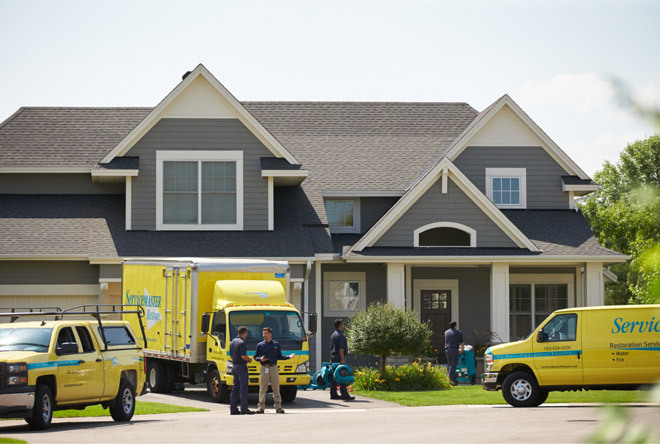Water Damage Case Studies: Water Damage Restoration to Gymnasium Floor in East Lyme, CT
Challenge
Water damage caused by a failure of a steam pipe relief valve in a room off a hall in an athletic facility building. After in- house staff cleaned up the water that affected the hall and boiler room, a visual inspection was made of the gymnasium floor and no apparent damage was found. Within a couple days, they realized that the water must have compromised the threshold and traveled under the floor boards as the water intrusion had now caused cupping. Some boards were beginning to rise with the swelling caused by the resulting high moisture levels. After making a couple phone calls, ServiceMaster Restoration by New London was selected to attempt to dry and restore the gymnasium floor.
We inspected the floor to find that the floor had moisture levels exceeding 25% in some areas. The construction of the floor made it difficult to run air under the floor with an exit point so alternative drying methods were employed. The floor was constructed tight to the concrete slab with a channel that could affectively allow water and moisture to travel under it, although the insulation between the tracks restricted moisture movement. Hardwood strip floors absorb moisture at a slower rate, but also releases it at a slower rate. The challenge was to extract the moisture out of the floor from the available floor tracks and through the floor itself.
Solution
A 50 X 54 foot containment area was built to create a drying chamber allowing the equipment to effectively provide air movement, heat and desert like air concentrated over the surface of the floor. Dehumidification equipment was placed in critical areas as were air movers to provide for movement across the floor. Dehumidifiers were placed to remove the moisture out of the containment space. Moisture readings were taken on a daily basis to determine the success of the methods and localize drying efforts to the appropriate areas. Floor mats were strategically placed to provide negative air to draw the water up and out of the floor. Readings were taken at the surface, mid range and deep into the core to affirm bringing it back to a dry standard. After 2 days of drying it was recommended by the flooring contractor to remove the top layer of finish to increase the effectiveness of the drying process. A temporary containment wall was built around the enclosure with netting to allow students use of the gym without disrupting the service area.
Days later, the floors were dry throughout so the equipment was removed. The enclosure was kept up until the finish sanding of the floor was completed to reduce dust. Finish was applied when the floor had time to re-acclimate to the pre-loss daily moisture levels. All parties were pleased with the results that were achieved with minimal disruption compared to a complete replacement of a floor that was only 5 years old.


